Via Native Appropriations, I found a set of vintage Valentines drawing on stereotypes of American Indians at the Vintage Valentine Museum.
“I’d never squaw’k if you’d be my Valentine” (1950s or ’60s):
“I want to be the CHIEF” (1940s or ’50s):
“I’m a straightshoooter Valentine. May I be your BOW” (1930s):
“I’m hunting for you, Valentine” (1941):
“Ugh! Ugh! I’m an INDIAN GIVER. It’s time you should learn it. For I won’t give my love, unless you’ll RETURN it!” (1940s):
“Ugh! Ugh! Give me your heart Valentine!”:
“You heap fine Valentine AND HOW!” (1950s or ’60s):
“I’m sending this ARROW CHEIFLY to say, let me be your “beau” (1930s or ’40s):
Lisa Wade, PhD is an Associate Professor at Tulane University. She is the author of American Hookup, a book about college sexual culture; a textbook about gender; and a forthcoming introductory text: Terrible Magnificent Sociology. You can follow her on Twitter and Instagram.
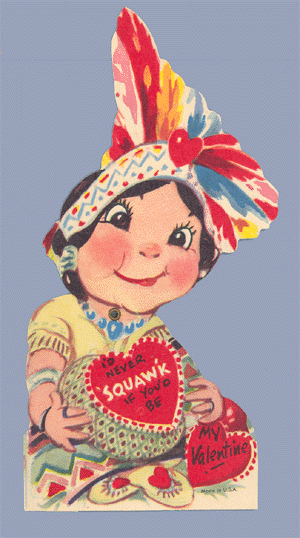
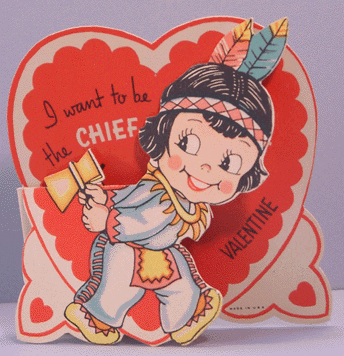
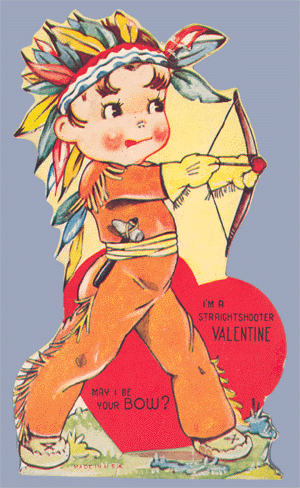
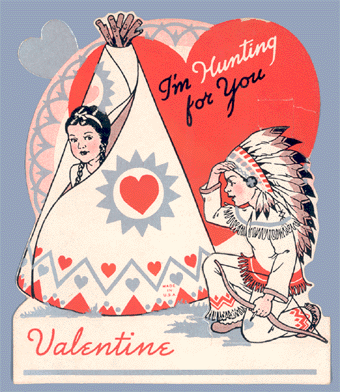
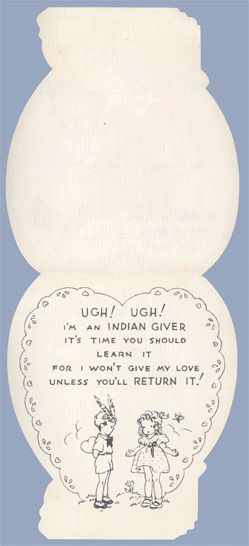
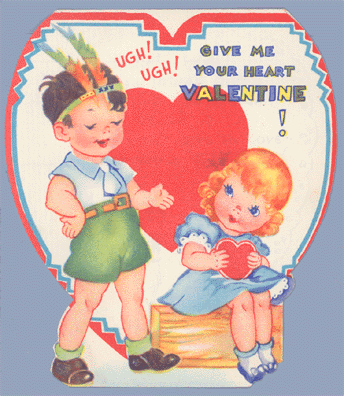
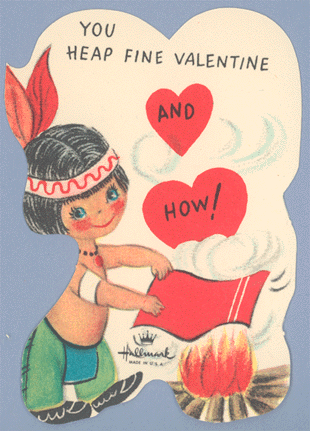
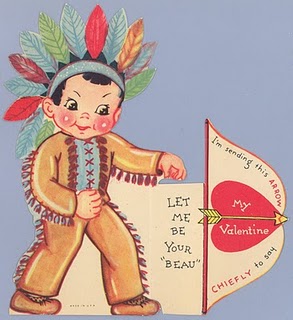
Comments 16
SamR — February 12, 2011
These are cute.
larrycwilson — February 12, 2011
Could we have some examples from 2011 rather than a half-century ago?
Debbie Reese — February 12, 2011
New Valentines cards may not look like that but those images live on in books for children. A prime example is seen in illustrations in Little House on the Prairie and similar "classics." See essays at American Indians in Children's Literature.
fog — February 12, 2011
What is "ugh! ugh!" supposed to be? I would expect those syllables to be uttered in response to something disgusting or terrible, not as a salutation.
Liz — February 12, 2011
Very tasteless and such a wonderful example of the cultural appropriation mentioned by Basiorana.
Alix — February 13, 2011
"Ugh" is something whites associated (at least pre-1970) with what Native Americans might say, kind of an exclamation, like "Hey".
Bri — February 13, 2011
It sounds like they're making a lot of references to the way the Native Americans were portrayed in the animated Peter Pan movie. Or perhaps that movie just reflected the popular view of them at the time. I wasn't around then to know...
The Trouble with Valentine’s Day | (Making / Being in / Staying in) TROUBLE — February 13, 2011
[...] Do their methods work to reinforce harmful stereotypes about femininity? About masculinity? Do they draw upon other stereotypes (racial, ethnic, class) in their attempts to make their product desirable to [...]
Maria — February 14, 2011
We need to look at there as "My how times have changed!" and not "OMG how racist these are!!" Back then, kids played "cowboys & indians" all the time. Tonto and the Lone Ranger were all over TV and serials in the theaters. As much as we don't like it now, these stereotypes were acceptable back then- these valentines weren't meant to be malicious or mocking. Instead of being flabbergasted or horrified, I look at these as a tribute to our cultural growth in the past 50 years. The same goes for the previous set that were more than a little misogynistic and disturbing.
Debbie Reese — February 14, 2011
Maria---I posted earlier in this discussion that you won't find Valentines like that now, but those kinds of images are still present in children's books used with children today.
I've got many examples at my website, American Indians in Children's Literature. I'm an assistant professor in American Indian Studies at the University of Illinois.
Some Valentine’s Day Questions | (Making / Being in / Staying in) TROUBLE — February 14, 2012
[...] Do their methods work to reinforce harmful stereotypes about femininity? About masculinity? Do they draw upon other stereotypes (racial, ethnic, class) in their attempts to make their product desirable to [...]